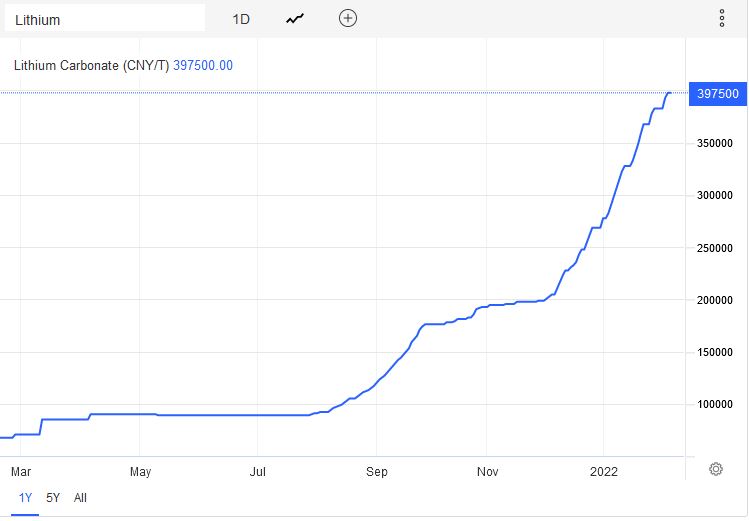Electric Vehicle (EV) batteries may be in for a substantial price increase as raw material costs rise with demand. While the increasing popularity of electric vehicles is reflected both in sales figures and market investments, increased demand comes with further pressure on supply chains – supply chains that have already been stretched thin by the global pandemic. Lithium, a vital component in the majority of EV batteries, is set to reverse a decade-long trend and increase in price as demand outstrips production.
The End of a Positive Trend
The past decade has been a formative one for the electric vehicle market. Across it, EV battery prices have experienced a gradual, though significant, decline in costs. Figures from December 2019 show that the cost of EV batteries had fallen 87% from 2010 when judged on a per kilowatt-hour basis (kwh). Between 2020 and 2021, global battery prices fell an additional 6%.
This increased affordability of EV’s has been significant for the viability of them and the future of the transportation industry as a whole. The recent announcement from the Biden administration for the roll out of $5 billion in funding to implement EV chargers only solidifies the impact they’ve had on the automotive industry and global sustainability practices. But studies have shown that cost is still the largest factor for individuals considering EV’s over comparable gas or diesel vehicles.
That positive trend seems to be hitting a speed bump in 2022 with the price set to rise to $135/kwh – with the perceived price parity of $100/kwh now predicted for 2023 or later.
Material Shortages & Mining Setbacks
The success of EVs have come with an increased demand for the essential materials and rare components that have made them more efficient. Of particular concern is lithium, an essential component for lithium-based batteries. While EVs can use a variety of batteries, the most common and arguably highest-performing are lithium-ion and lithium iron phosphate (LFP) batteries.
While the former enjoys wide market saturation, the latter is currently favored by the various Chinese manufacturers and market leaders like Tesla.
Bloomberg New Energy Finance’s (BNEF) predicts that battery prices will continue to rise through 2022 as present lithium production struggles to meet demand. Surprisingly, failure to meet demand isn’t a result of resource scarcity, but rather from a lack of established mining infrastructure. Countries like the US and Portugal are estimated to hold large lithium reserves, but the process of tapping those resources takes time. To move a mining operation from the discovery to the operational phase can take an average of 16.5 years. This can be additionally hampered by environmental concerns.
An example of such concerns comes from Montalegre, Portugal, where a lithium mining project was terminated due to local environmental worries – most from the outlined plan that involved levelling a mountainous, 825-hectacre site, with essential components of the project only meters from residential properties. Similarly, an exploration license in Serbia was revoked after extensive environmental protests. The protestors claimed the plans for the mine were not being designed with concerns for pollution or the health of residents.
An additional concern for the North American and European markets is the dominance of China in the production of lithium-based EV batteries. China is responsible for over 70% of global battery cell production capacity, adding some volatility to the market should supply chains face disruption. Since September 2021, Chinese producers of LFP batteries have raised prices between 10-20%.
The Road Ahead
Long-term predictions for the cost of EVs is still positive overall. While 2023 may not be the year for $100/kwh parity, 2024 and 2025 are still predicted to experience reduction in prices. In the short term, 2022 is not predicted to result in monumental changes. For example, Lithium-ion battery pack prices averaged $140/kwh in 2020 and $132/kwh in 2021. That price is, again, set to rise to $135/kwh in 2022. This is a noticeable price increase, but not a major setback when compared to prices in 2020.
Battery electric vehicles need six times more minerals than conventional gas vehicles. This means the EV market is generally more susceptible to fluctuations in mineral costs. While lithium has faced the largest growth in demand, nickel and graphite are not far behind. Lithium isn’t the first material to face potential production shortfalls, as nickel has also faced predictions of shortages and production limitations. Moving forward, the market will need to adapt as the mineral sector responds to increasing needs from the production of EV batteries, and practices for lithium mining will need to adapt to accommodate environmental concerns where reserves seem the most plentiful.

